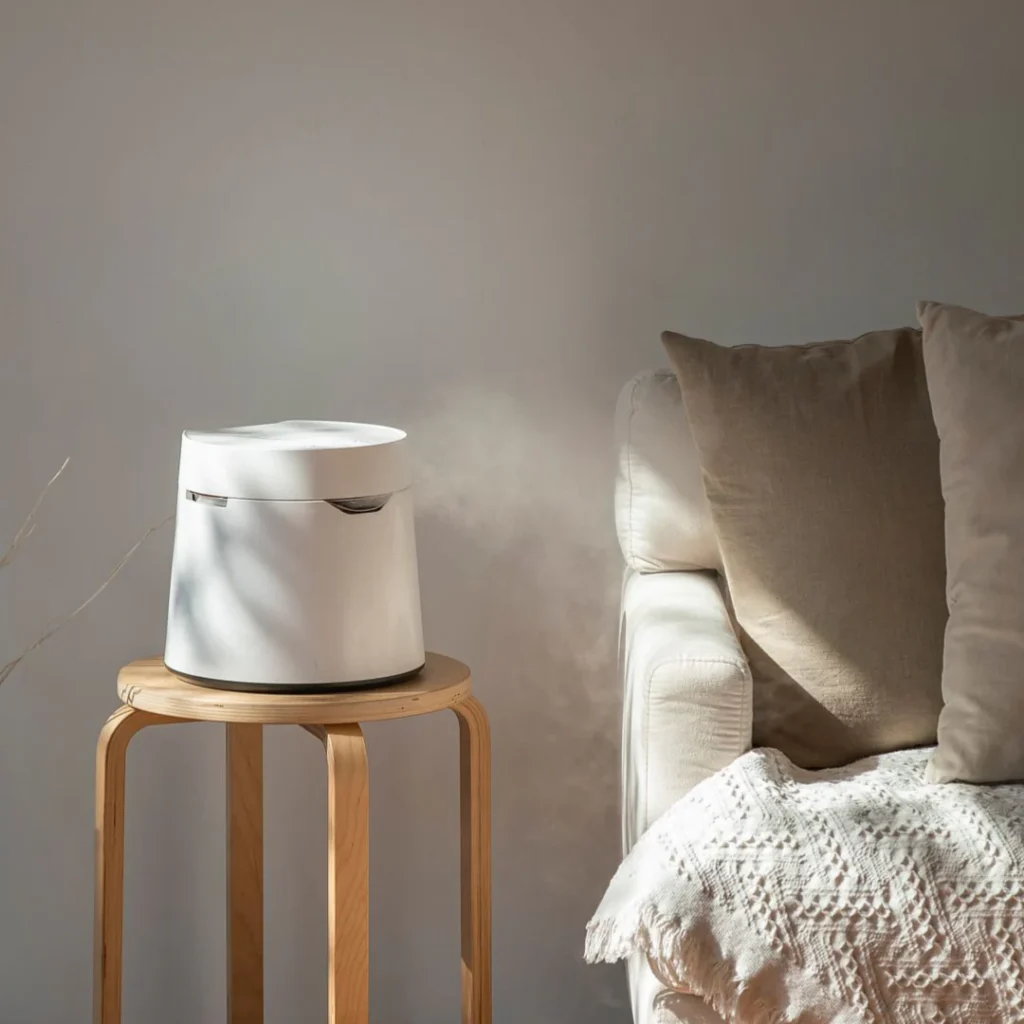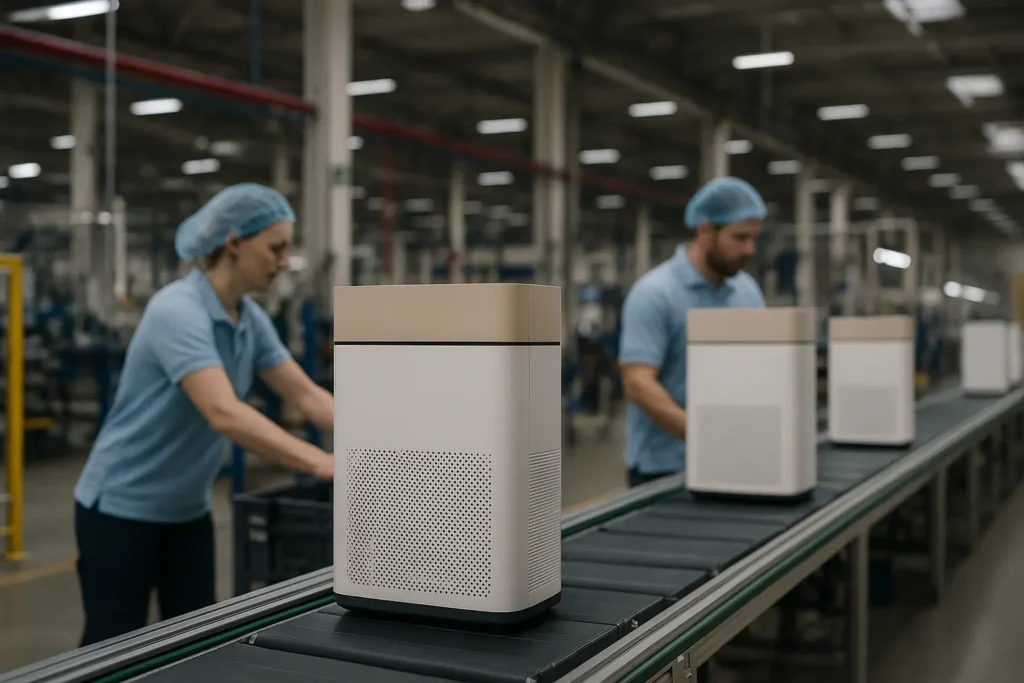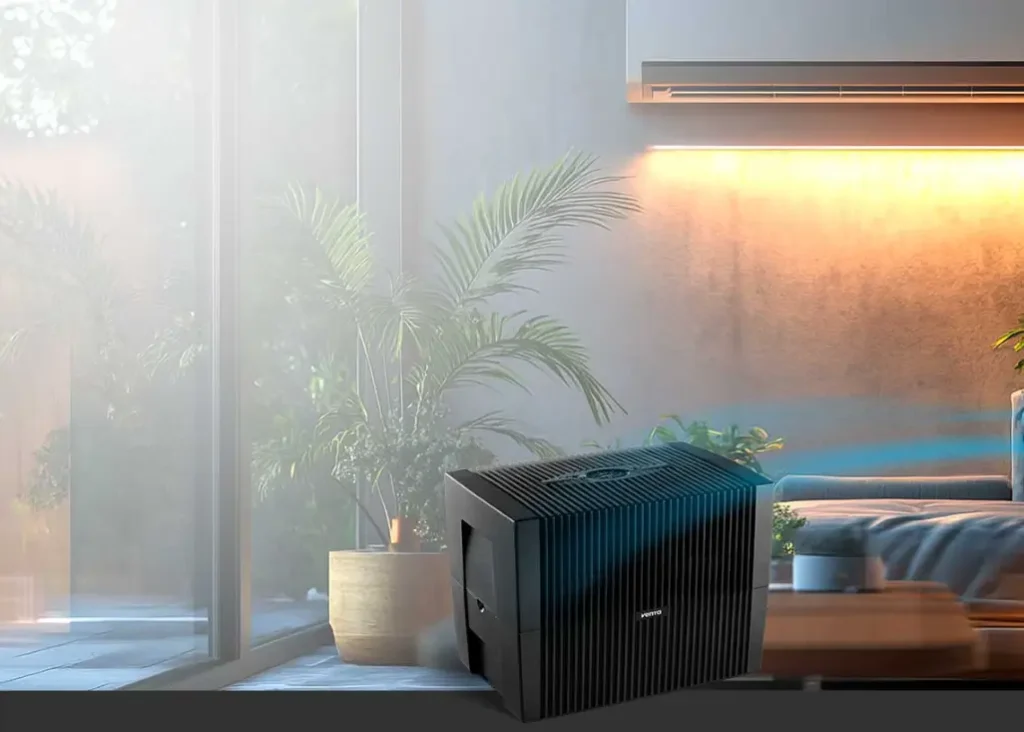Formaldehyde is a type of volatile organic compound (VOC) that is commonly present in residential spaces. Unfortunately, exposure to them can be a bit harmful. Hence, you need to learn how to get rid of this chemical.
Formaldehyde is a chemical that is typically colorless but odorous. It is used in various materials, cosmetics, and household chemicals. For instance, you can find it on plywood, adhesives, and make-up. Even in commercial and industrial applications, formaldehyde is also present.
Of course, this indicates that formaldehyde has a lot of uses. But at the same time, people should be wary when it comes to this chemical. Studies have already confirmed that this particular substance can induce harmful health effects, which we will discuss later on .
Furthermore, you should learn how to remove formaldehyde in your living spaces, ensuring that you'll avoid exposure. One of those methods is using high-quality air purifiers .
Where Does Formaldehyde Come From?
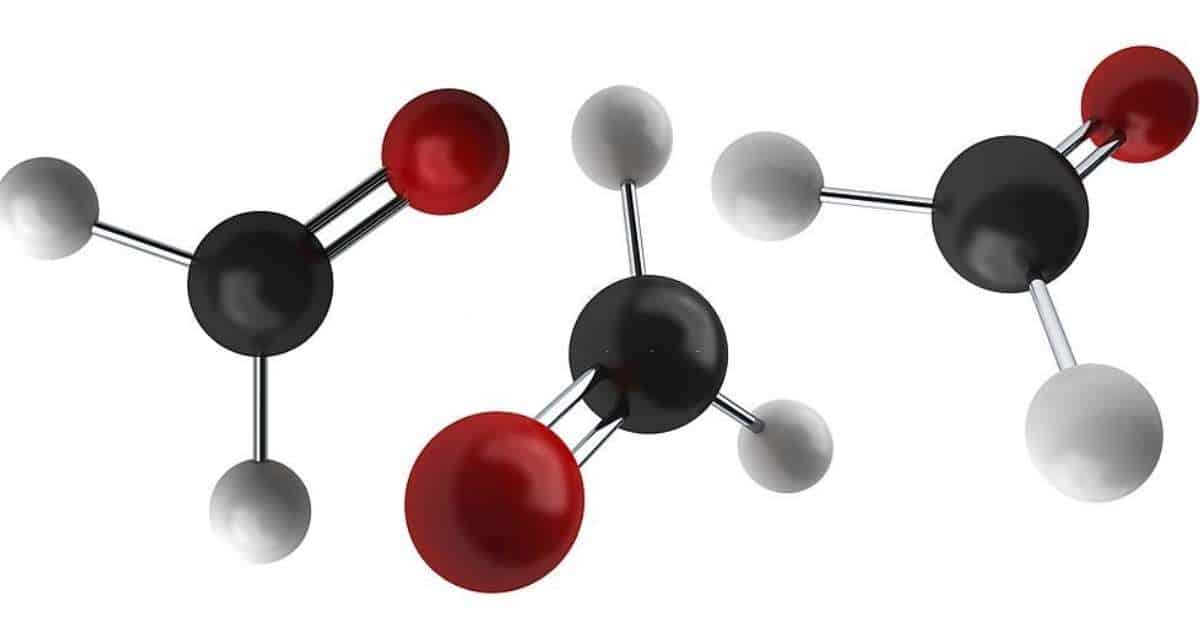
Image Source: iStockphoto
Formaldehyde is a common chemical found in environments like air conditioners, paper products, cigarette smoke, and nail salons. It's a colorless gas that irritates the eyes, nose, and throat; the odor of formaldehyde is a chemical combination of formic acid and acetic acid .
Formaldehyde is toxic to humans and animals, and exposure can cause symptoms such as dry and irritated eyes, sore throat, and irritated skin. In your home, formaldehyde is derived from the following sources:
- Pressed wood products, such as panels, particle boards, and plywood
- Foam insulation
- Paints and wallpaper
- Specific types of fabrics, such as permanent press
- Specific types of personal amenities and cosmetics
It is also stated that formaldehyde is also generated through combustion. When you burn natural gas, gasoline, and kerosene, formaldehyde is produced. Hence, if you have appliances inside your home that use these gasses, it is likely that you are exposed to formaldehyde .
Another thing that you need to know is that this substance is a residue of tobacco. Hence, households with tobacco smokers also deal with this problem, whether they are aware of it or not. In fact, it is highly likely that your home has traces of formaldehyde, but you are not aware of it yet. The invisible presence of these chemicals would call for the service of air purifiers from reputable manufacturers .
Is Formaldehyde Normal in Homes?
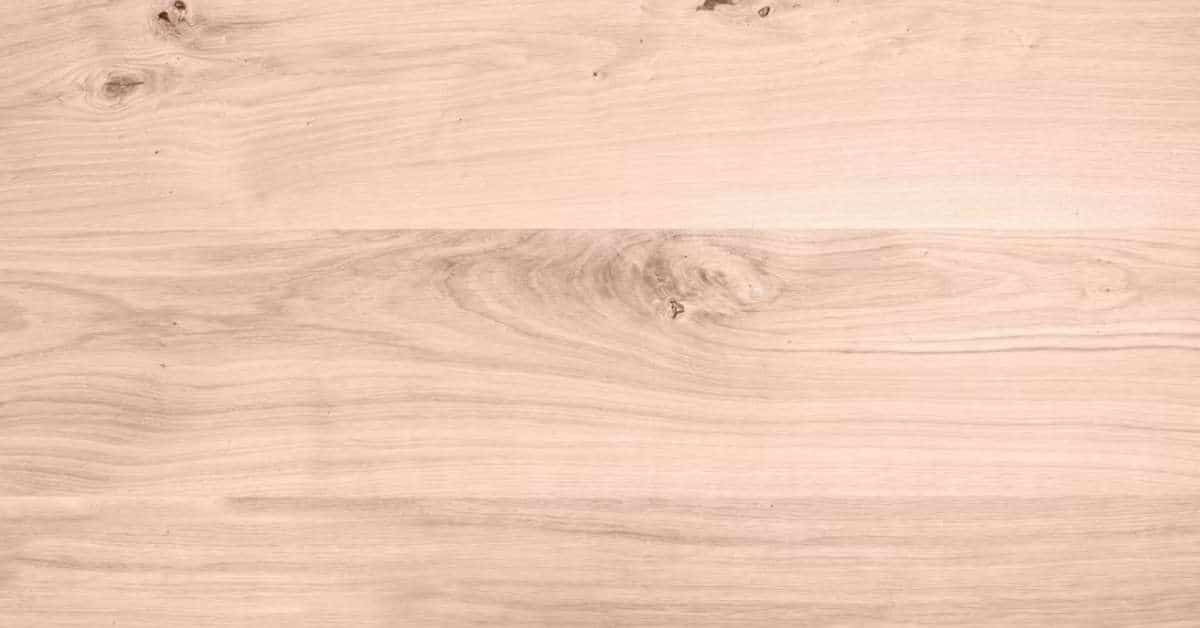
Image Source: Unsplash
As mentioned, formaldehyde is found in many common household items, including carpets, permanent-press clothing, foam in mattresses, and wall paints. But does this mean that formaldehyde is a normal occurrence in homes?
Based on the information published by the US Consumer Product Safety Commission, formaldehyde is typically present in both outdoor and indoor air. The good news is that they are only at low levels, specifically lower than 0.03 parts per million.
However, it is clearly indicated that formaldehyde is not naturally occurring. This means that they are not present in the "normal" air composition. It is a chemical that is produced by different sources, such as the combustion of vehicles. Hence, the presence of formaldehyde in your home should not be treated lightly. As much as possible, you need to address this matter right away.
What are the Side Effects of Formaldehyde Exposure?
Again, we have to emphasize that formaldehyde exposure isn't something that you should treat lightly. Formaldehyde is toxic, so it's both harmful to humans and animals. Prolonged exposure to this chemical at high levels may mean that you are prone to various harms, such as the following:
- Headaches
- Nausea
- Vomiting
- Breathing difficulties
- skin irritation
But these are just minor side effects. Exposure to large quantities of formaldehyde can cause specific types of cancer in humans . Even in laboratory test animals, the same result has been found. Examples of these cancer types are the cancer of the nasopharynx and cancer of the nasal sinuses.
Furthermore, individuals who are working in conditions where there's a lot of formaldehyde, such as embalmers and hospital professionals, are prone to developing leukemia.
These are among the reasons why you should avoid formaldehyde exposure at all costs.
Common Sources of Formaldehyde in Homes

Image Source: Unsplash
Formaldehyde isn't a natural aspect of your home. Hence, you should be aware of the common sources of this chemical. In this way, you will be able to avoid having severe formaldehyde emissions within your house or building.
Here are the top sources of formaldehyde in homes:
Walls and Floors
The flooring and walls of your space could be a rich source of formaldehyde, especially if there are adhesives applied to them. Many paints have formaldehyde on them, so you better watch out for the type of paint that you are going to use. You may want to opt for those that have low or zero volatile organic compounds (VOCs).
If there are wood panels on the walls of your building or house, there's a good chance that formaldehyde is present.
Bedroom Furniture
Many types of bedroom furniture are crafted through the use of pressed-wood materials, such as particle board, plywood, and fiberboard. While they appear harmless, these materials have been processed with the use of formaldehyde.
If the furniture says that it is fire retardant, there's also a possibility that it contains formaldehyde. This is an issue since, at room temperatures, formaldehyde turns into a gas and becomes an emission.
Personal and Home Products
Many household products and personal amenities contain formaldehyde. For instance, your balm, hairspray, and makeup are processed in settings where formaldehyde is present. In fact, there's a possibility that formaldehyde is part of their compositions.
While they sit idle on your shelves or cabinets, these products could release formaldehyde and other VOC in the air. So make sure that they are sealed properly and free from high-temperature exposure.
Gas Stoves
Interestingly, natural gas is among the few exceptions where manufacturers don't have the responsibility for formaldehyde emissions. When using gas stoves, the natural gas would automatically release formaldehyde, carbon monoxide, and nitrogen dioxide into the air.
Because of this, it is crucial that an exhaust hood should be present in your kitchen if ever you are using gas stoves. In this way, these residues would be expelled from your kitchen, preventing you from inhaling them.
Why Is Formaldehyde Purification Important?
We have already mentioned the potential dangers of formaldehyde in your health. Because of this, you need to learn different methods on how to curb its presence. As much as possible, you would want your home to be free from this chemical.
In the following sections, we will introduce several tested-and-proven methods that are effective in removing formaldehyde and different types of VOCs in your living spaces.
Adding Air Purifier to Get Off Formaldehyde
If you want a foolproof method of removing formaldehyde in the air , then you have to invest in an air purifier. Many of you have already heard about these air purifiers. Essentially, these are devices that capture different airborne pollutants.
But at the same time, many are unaware that it is not only pollen, allergens, and pathogens that these devices can deal with. Air purifiers are also known to be effective against lingering substances, chemicals, and odor-causing pollutants.
Specific AHAM-certified air purifiers can handle formaldehyde properly. Those that have the appropriate filters would be able to reduce the presence of formaldehyde in any given space. In a short while, you'll know how air purifiers can do this feat.
Why Is an Air Purifier Important to Improve Air Quality?
Your indoor air quality is often compromised by different pollutants. From the dust outside your home down to the hair of your pet, these things can gradually reduce the overall breathability of your indoor air.
Of course, there are numerous ways you can improve polluted indoor air. We can list multiple ways for that. However, if you want a foolproof, no-nonsense approach, then you should opt to use an air purifier.
After all, these devices are designed to do one job, and that is to eliminate airborne particles that could potentially cause various health issues. With air purifiers, you can guarantee that your home will have fresh, breathable air.
Air Purifier for Formaldehyde
Air purifiers remove any small particles of dust or dirt from the air, reducing the chances of respiratory allergies and asthma. The purifiers remove the particles mechanically by forcing air flow through their filters.
One of its filters, called the activated carbon filter or charcoal filter, is the one responsible for removing various VOCs and chemicals in the air. When the air passes through the carbon filter, those substances are being "broken," ensuring that they won' t be released back into the air.
Hence, if your air purifier has carbon filters, your indoor space would be free from possibly harmful chemicals. It is an important filter that should be present in an air purifier should your problem be related to these toxins and gaseous substances.
Is Air Purifier for Formaldehyde Safe?
Yes. Air purifiers that use filters are generally safe. These devices don't emit harmful emissions that could trigger allergies and respiratory illnesses. These filters don't have chemicals on them either. They can capture contaminants through the standard process of filtration, which has been used for many centuries already.
When these air purifiers remove formaldehyde, no residual matters are being released into the air. That's how "clean" and "seamless" these air purifiers are.
The only type of air purifier that you need to watch out for is an ozone generator. As its name suggests, an ozone generator is designed to reduce gaseous ozone in the air. These ozone gasses are said to neutralize contaminants in the air. However, keep in mind that its effectiveness is not that impeccable as compared to filter-based air purifiers. Moreover, ozone is a lung irritant that could harm your health.
How Do Air Purifiers Work to Remove Formaldehyde?
As mentioned earlier, air purifiers have activated carbon filters on them. Of course, there's no magic on these carbon filters. They follow the tested-and-tried principle of adsorption.
Adsorption is a type of chemical reaction. Particles that are subjected to this process are then trapped in the porous structure of the filter. Over time, these substances would get broken, ensuring that there would be no remnants on them.
Because of the effectiveness of carbon filters, they are typically utilized by various industries in collecting airborne chemicals and gasses, as well as odor-causing substances. Of course, the same mechanism is also used in air purifiers.
Removing Formaldehyde by Air Purifiers: Step-By-Step
Here's how air purifiers remove formaldehyde and VOCs. Overall, the process is simple but effective.
- The air purifier draws the air toward it through the use of its fans.
- Meanwhile, the air passes through several layers of filters. Once it reaches the carbon filter, the chemicals and substances are trapped in the porous layer of the filter. This is where adsorption takes place.
- After the carbon filter, the air is then released back into the room.
This process is repeated until such time the air in a given room is already free from various pollutants.
How Long Does It Take Formaldehyde to Settle After Removal?
It depends on the severity of the formaldehyde emission in your space. For instance, if the concentration of formaldehyde is to spread, then it is possible that it would take a while before an air purifier can remove the said chemical.
It would take quite some time before the traces of formaldehyde would be removed in large spaces, especially if the air purifier that you have is rated to be effective only in small spaces. And that would bring us to our next section.
Things to Consider When Buying an Air Purifier for Formaldehyde
You want an air purifier that provides holistic results in formaldehyde removal. Hence, you need to select the right one for you. Here are some of the important aspects that you need to take into account.
- Square footage - Each air purifier has its distinct effective range. For instance, an air purifier is rated to work on 300 square feet while others work on 700 square feet or larger. What you need to do here is to find an air purifier that has an effective range that matches the square footage of the room or space that you want to purify. For example, if your room is 500 square feet, look for an air purifier that can accommodate such an area.
- Activated carbon filter - Again, we have to emphasize the importance of an activated carbon filter in formaldehyde removal. It is the only filter that is proven to be effective against chemicals and substances. HEPA filters won't do that much for these gaseous compounds.
Air Purifiers That are Best for Removing Formaldehyde
Several air purifiers in the market today excel in formaldehyde removal. These air purifiers are your best bet for controlling formaldehyde emissions in your home. See them now:
| Coverage | Types Of Filters | |
|---|---|---|
| HisoAir Model HA139 | 516 square feet | HEPA filter, activated carbon filter, pre-filter, UVC light |
| HisoAir Model HA-1601 | 1011 square feet | HEPA filter, activated carbon filter, pre-filter, UVC light |
| HisoAir Model HA-1968 | 1,937 square feet | HEPA filter, activated carbon filter, pre-filter, UVC light |
1. HisoAir Model HA139
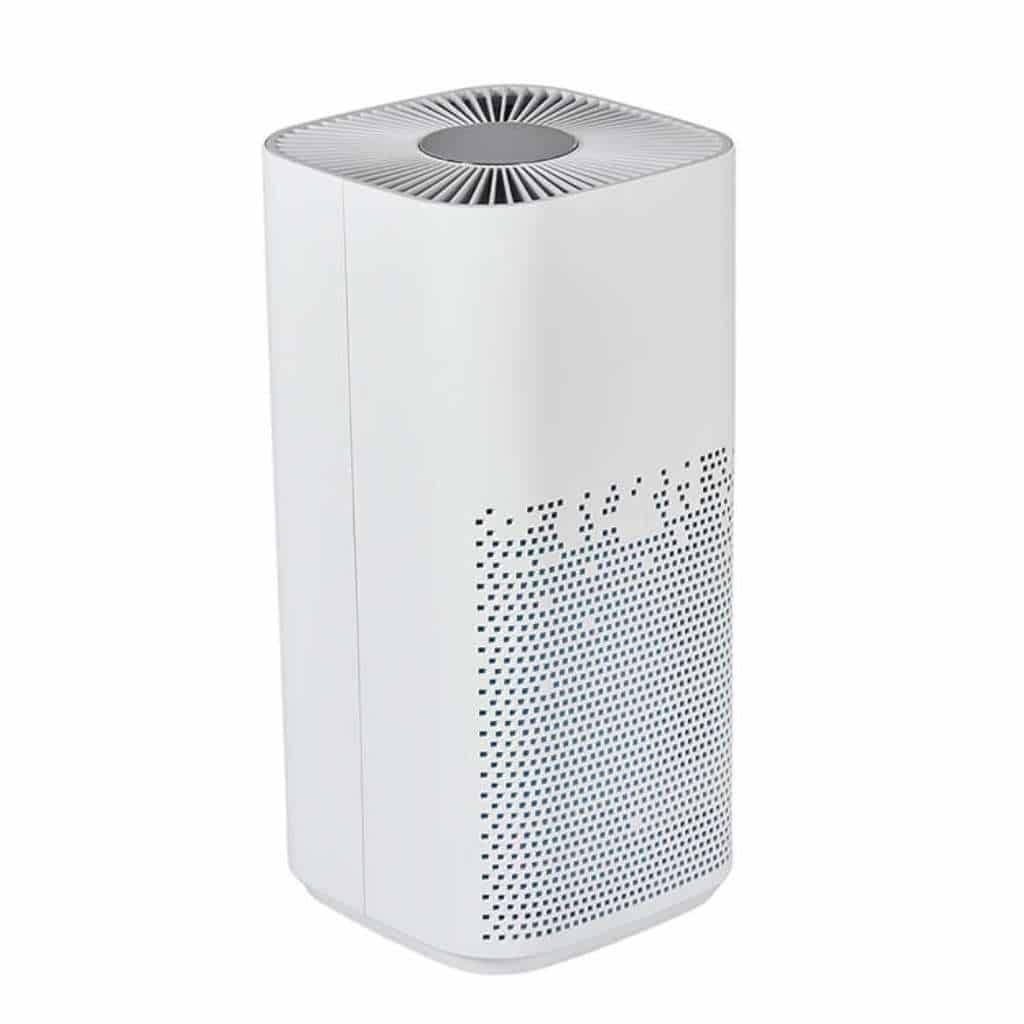
Image Source: HisoAir
Take the Model HA139 Air Purifier as the standard for formaldehyde removal. This air purifier features a high-quality activated carbon filter that is proven to work against formaldehyde and other forms of VOCs. With its powerful fan and airflow, it can easily draw in the emissions in your space, allowing them to be filtered out from the air.
This specific mechanism is the reason why the Model HA139 is commonly used in commercial and industrial applications. When there's a need for extensive chemical removal in the air, this device is pretty much reliable. At the same time, this air cleaner is also effective against different airborne pollutants, thanks to the wide array of filters included in it.
| PROS | CONS |
|---|---|
| Simple but quiet operation Energy-efficient performance Offers comprehensive air filtration |
No known drawbacks |
2. HisoAir HA-1601 Air Purifier
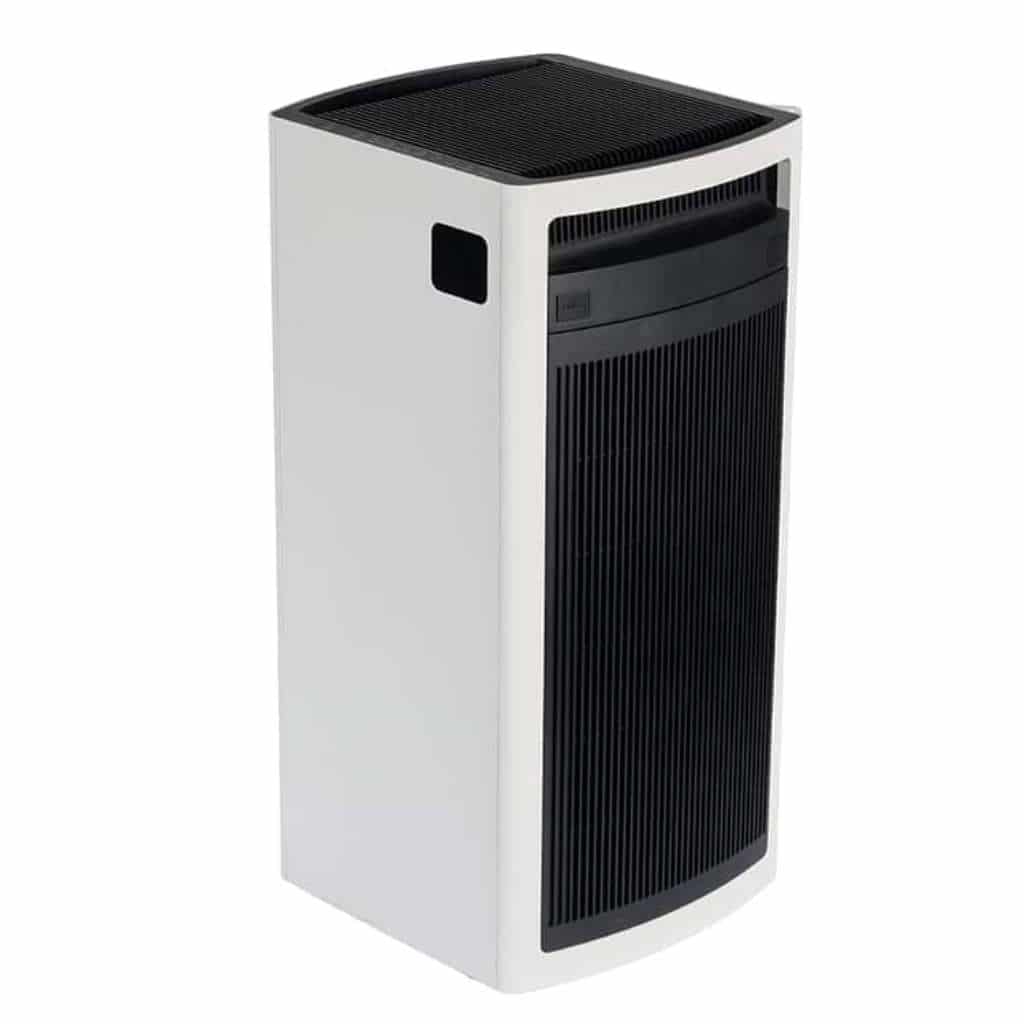
Image Source: HisoAir
Another air purifier that you can trust for formaldehyde removal is the HisoAir HA-1601 Air Purifier. This particular air purifier features a patented HEPA filter technology that inputs enhanced bacterial and viral-capture technology into its filtration system. As a result, it can trap different types of airborne contaminants, even quite elusive ones.
Its activated carbon filter is highly efficient in breaking VOCs and other chemicals in the air. It has no problems reducing the presence of formaldehyde, ensuring that your indoor air is safe to breathe. It is also designed for large rooms, as this air purifier covers up to 1,011 square feet of space. Since it is an AHAM verified air purifier, you can guarantee its energy-efficient and long-lasting performance.
| PROS | CONS |
|
|
3. HisoAir Model HA-1968
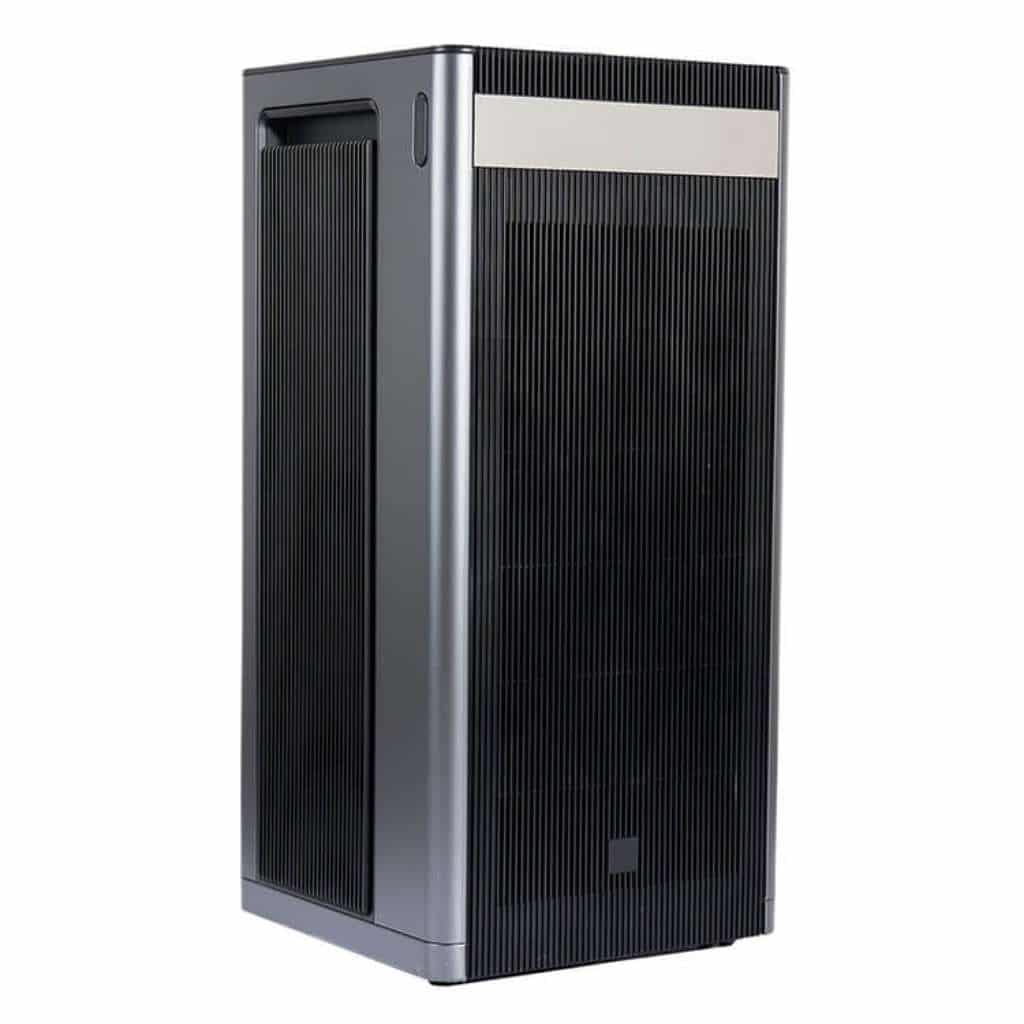
Image Source: HisoAir
The Medify MA-50 Air Purifier is a powerful formaldehyde remover. It offers an effective filtration system that is capable of removing various substances and chemicals in the air. Its carbon filter ensures that traces of VOCs, including their smell, are eliminated. Because of its effective performance, this air purifier became a trusted choice for residential and commercial applications because of its effective performance.
Furthermore, the HisoAir Model HA-1968 Air Purifier is a digital device, ensuring that you can operate it conveniently. It has a touch-screen panel that lets you configure its various settings. with a PM2.5 sensor and optional temperature and humidity sensor so that it can monitor the air quality of your indoor spaces.
| PROS | CONS |
|
|
How to Prevent Formaldehyde After Removal?
Preventing formaldehyde emission is quite tricky, as there can be multiple sources for it. But at the same time, the very solution to your problem is by ensuring that you don't bring any items and amenities that contain formaldehyde.
One way of doing this is by being picky with your paints and wallpapers. They contain formaldehyde, and they don't stop emitting even if they are already dry. As much as possible, go with those paints that are formaldehyde-free.
If you are looking for wooden upgrades, look for solid wood. Skip laminated wood, as they have a lot of formaldehyde on them. If this is the only available option, make sure that it is compliant with the CARB ATCM standards . Again, the The key here is to ensure that you don't use any items that contain formaldehyde. Otherwise, there's no end to this problem.
Other Ways to Remove Formaldehyde in the Air
Since formaldehyde is toxic, it is essential that you will be able to reduce its presence in your homes and buildings. So aside from using air purifiers, you should also learn other measures for formaldehyde removal, such as the ones below:
Be Wise With Your Furniture Selection
Believe it or not, the furniture in your home can become an excellent source of formaldehyde. Keep in mind that cabinets and furniture made from pressed materials, such as MDF and plywood, may contain and generate formaldehyde.
According to experts, the emission of these home amenities may decrease after ten months. But the threat would still be there. So what should we do here?
Well, if you are planning to buy new sets of furniture for your newly remodeled home, you might consider safer options. Examples of these would be upholstered furniture. Furthermore, you should prefer solid wood furniture. If the items in your home are free from formaldehyde, then you have nothing to remove anymore!
Opening a Window
Another solution that you might want to opt is opening the windows in your home. This would allow air to circulate, causing the air inside to escape. That would help alleviate for the presence of formaldehyde in the air.
But be careful in doing so. Try to limit the amount of time that you will open your windows, especially if you are residing in a city. Otherwise, you'll also invite other outdoor pollutants to enter and settle in your space.
Minimize Humidity and Heat
One of the best options for reducing the presence of formaldehyde in your space is regulating heat and humidity. According to the Environmental Protection Agency, heat hastens the release of formaldehyde in the air. If your home has items that contain this substance, high temperatures accelerate their emission.
Another thing that you watch out for is humidity. When the humidity is too high, it might promote the release of formaldehyde. Fortunately, you can counteract this problem through the use of a dehumidifier.
Place Plants That Remove Formaldehyde
Plants absorb formaldehyde, an irritant that pollutes the air. Some plants can absorb it more efficiently than others, though, so if you're concerned about it, you might want to grow some. Some common plants that can absorb formaldehyde include the following:
- Philodendrons
- Golden pothos
- Spider plants
You may want to explore some other plants that are excellent at removing toxins. If you are having problems with different types of chemicals, filling your house with Areca palm or Lady's palm might be necessary.
Conclusion
Here, it is evident that exposure to formaldehyde and its smell has some repercussions on your smell. Hence, it is essential that you will be able to remove this chemical from your living spaces to ensure that your welfare won't be compromised.
Among the solutions we listed here, the use of an air purifier is the most effective when it comes to removing the scent and airborne residues of formaldehyde. Therefore, there's a need for you to invest in high-quality air cleaners from reputable manufacturers, such as HisoAir. Visit HisoAir and check out its several provisions for air purifiers!
Check other informative blogs here!



